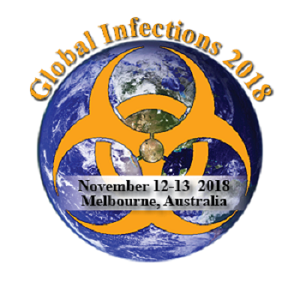Sindew Mekasha Feleke
Ethiopian Public Health Institute (EPHI), Addis Ababa, Ethiopia
Title: `Sero characterization of Plasmodium species in Limu Kossa District of Jimma Zone, Western Ethiopia
Biography
Biography: Sindew Mekasha Feleke
Abstract
Ethiopia is among the sub-Saharan African countries successful in reducing malaria burden in the last decade. The Government of Ethiopia launched elimination strategy taking advantage of this reduction in line with the commitment of African leaders to attain malaria elimination in 2030. However, unlike other settings Ethiopia requires additional efforts to achieve this ambitious elimination plan in due to the co-existence of both P. falciparum and P. vivax. The current case management mainly target both species. Despite the previous reports of the existence of the other two human malaria parasites including P. ovale and P. malariae in the past, there is no adequate and current information in this regard. This is, therefore, to describe the existence of P. ovale and P. malariae using an advanced molecular technique that helps to investigate Plasmodium spp. in Limu Kossa District, Jimma Zone, and Southwestern Ethiopia. A total of 180 serum samples were collected from three villages located in Limu Kossa District, 400 Km southwestern Ethiopia during October 2016. Longitudinal follow up and monitoring performance malaria elimination program was underway for the last years in Arengama 1, Arengama 2 and Konche villages. Serum was prepared from whole blood collected from the residents to investigate the presence of human malaria parasite marker antibodies. The investigation was conducted using LUMINEX, which is an advanced technique as briefly described below. Serum samples (1µl) diluted with 399 µl of 30ml buffer B and 20µlof 6mg/ml E.coli extracts and incubated for 1 hrs at 37 oC and stored at 4oC overnight. Next morning the Luminex plate pre wetted with 200ul PBST buffer and empty with vacuum. The tubes with coupled beads solution with each of the 7 different malaria antigens (CSP (5), AMA1 (33), PfMSP1 (36), PvMSP1 (91), PmMSP1 (16), PoMSP1 (45), LSA1 (23)) were mixed with vortex and from each antigen coupled beads solution 15ul transferred to conical tube and mixed with 5ml buffer. The antigen coupled beads and buffer-A solution poured to the tray and 50µl transferred to all wells of the Luminex plate using multichannel pipette and washed twice with 100ul of PBST, vacuumed and 50µl of sera dilution added in duplicate plate well followed by incubation for 1 hour and 30 minutes at room temperature on a shaker. After incubation the plate washed with PBST buffer, vacuumed and 50 µl of secondary antibody buffer A solution added to each well using multichannel pipette and incubated for 45 minutes at room temperature on a shaker. The procedure followed by plate wash, vacuum and 50µl strepavidin-phycoerythrin and buffer A solution added to each well and incubated at room temperature for 1 hour on a shaker. The plate washed with 100µl of PBST, vacuumed and 50ul of buffer A added to each well and incubated for 30 min at room temperature on a shaker. The last step was the plate washed and 125µl of PBS-PH 7.2 added to each well, incubated for 2 minutes and followed by immediate load on the calibrated and programmed Luminex machine and run the experiments.
Among 180 samples processed four human malaria parasites were detected using the state-of-the art technique. Plasmodium falciparum accounted most of the antibodies detected. More interestingly, antibodies of both P. ovale and P. malariae were identified in the present analysis. Details of the findings of laboratory analysis are presented in Table 1 below. The Cumulative exposure history over the last five years for Pf MSP1 and AMA was 39.4%(n=71) and the recent exposure history over the last 12 months for Pf CSP and Pf LSA antigens was 11.1% (n=20).
Our preliminary finding from the field demonstrated the significant exposure history of study participants to all plasmodium species using LUMINEX. The present result showing the existence of recent exposure to P. malariae and P. ovale remains a challenge for malaria control and elimination strategy.
This local findings call for performing large scale survey and redefining the Plasmodium species composition to well inform the National Malaria Control Program in improving malaria microscopy in the country.

